Maasai Mara - How to Plan the Best Safari, Packages, and Cost
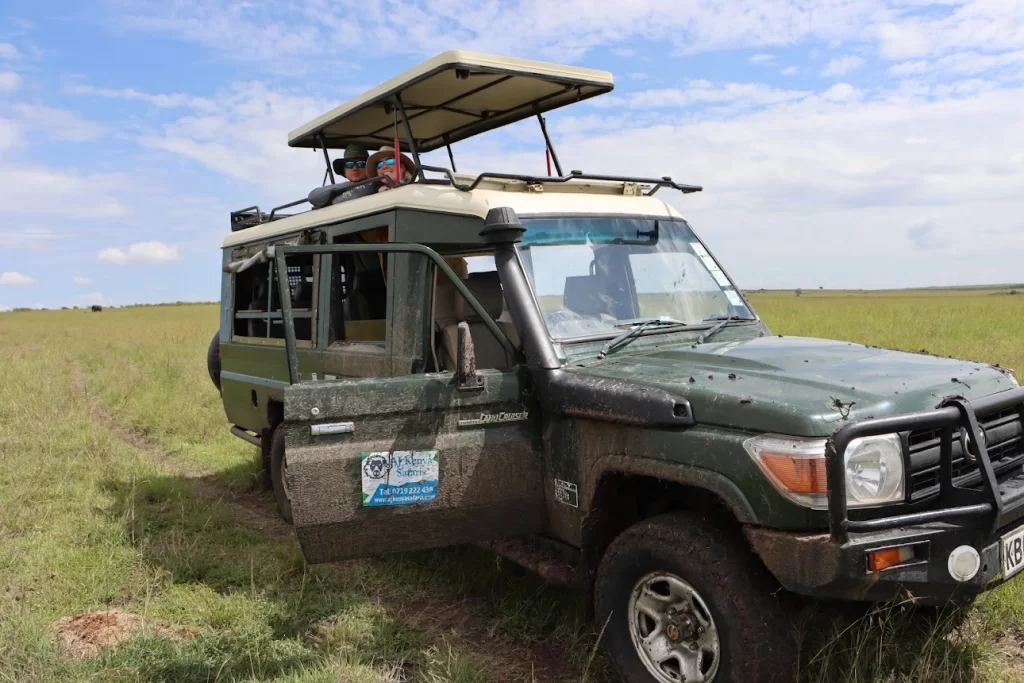
A safari to the Maasai Mara National Reserve in Kenya allows you to experience the wild and untamed beauty of Africa. The park is home to some of the world’s most incredible wildlife, including lions, elephants, rhinos, cheetahs, leopards, giraffes and more. With the annual wildebeest migration taking place between July and October each year, there is never a dull moment in this remarkable location.
In this article, James Gatheru, our senior Kenya safari specialist, will share all the information you need when planning on visiting the Maasai Mara. But before then, let us share our contact details and how you can book a safari to Maasai Mara.
Contact us to Book Your Safari Kenya’s Maasai Mara National Reserve
We invite you to contact us via Call/Whatsapp at +254-748-258-880, or email to safarioffers@ajkenyasafaris.com to start planning your Masai mara safaris. Masai-mara.in is a wholly owned subsidiary of AJkenyasafaris.com Ltd which also owns Kenyaluxurysafari.co.uk.
We are the local experts of Kenya travel, and we promise to plan the best Kenya safari holiday for you.
Safari Tourism in the Maasai Mara
The Masai Mara National Reserve in Kenya is one of the most popular wildlife destinations in the world, renowned for its stunning landscapes and abundant biodiversity. Located in southwestern Kenya, this protected area covers an area of approximately 1,510 square kilometers and is home to lions, elephants, giraffes, and more. It also plays host to the annual wildebeest migration between July and October each year which attracts tourists from all over the world. For those looking to visit this magnificent reserve, there are plenty of tour operators offering luxury packages as well as mid-range or budget options depending on your preferences. So come explore the beauty of Masai Mara with a guided tour today!
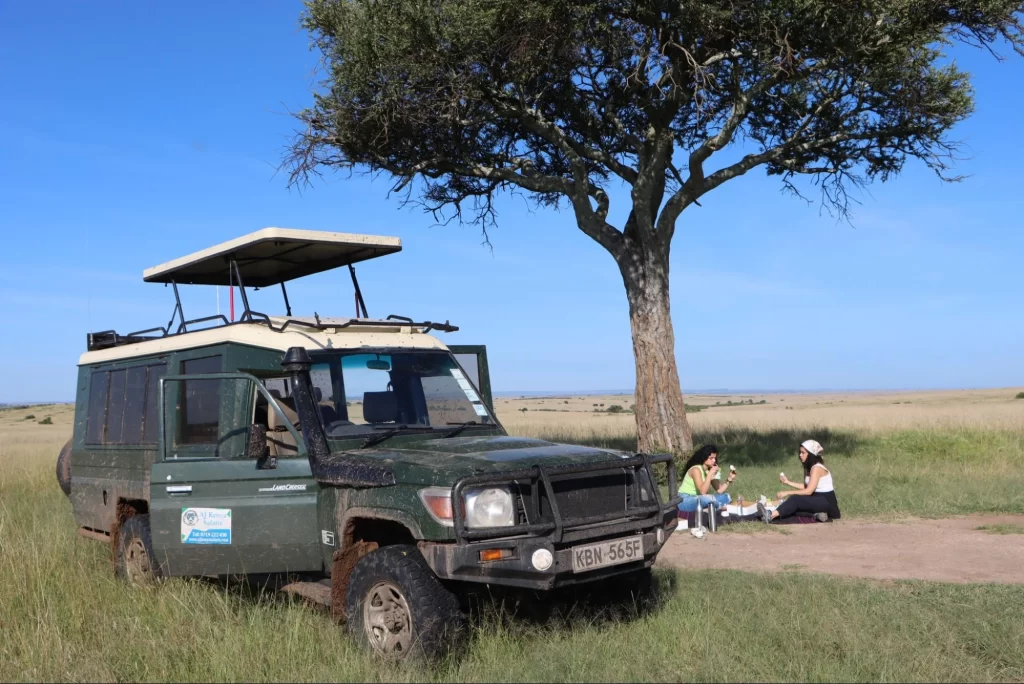
Accommodation Inside the Mara
For those looking for accommodation while visiting this majestic reserve, there are plenty of options available depending on your preferences. Luxury lodges or tented camps within the reserve offer comfortable stays with exceptional services, while budget accommodation options such as camping sites are also available for those seeking more affordable options. There are even seasonal mobile camps set up during the great migration which provide unique experiences for visitors. So come and explore all that the Masai Mara has to offer with one of these amazing accommodation options!
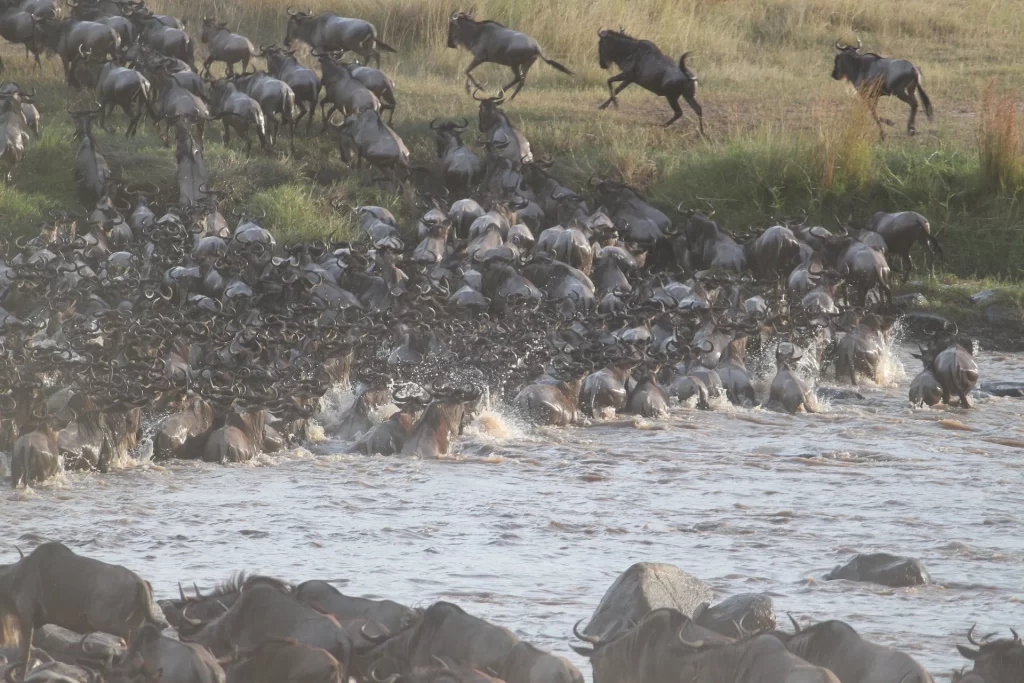
Best Time to Visit the Mara
For those looking for accommodation while visiting this majestic reserve, there are plenty of options available depending on your preferences. Luxury lodges or tented camps within the reserve offer comfortable stays with exceptional services, while budget accommodation options such as camping sites are also available for those seeking more affordable options. There are even seasonal mobile camps set up during the great migration which provide unique experiences for visitors. So come and explore all that the Masai Mara has to offer with one of these amazing accommodation options!

Top 10 Things to Do in Masai Mara
- Go for a Game Drive
- Witness the Wildebeest Migration
- Take a Horseback/Walking Safari
- A Day Trip to the Narok Museum
- Hot Air Balloon Safari
- Visit Wildlife Conservancies
- Relax in a Luxury Lodge in the Park
- Visit Masai Villages of the Park
- Bring Your Binoculars for Birdwatching
- Plan a Bush Dinner
Masai Mara Gates
There are several gates that provide access to the Maasai Mara National Reserve, including the Oloololo Gate, the Sekenani Gate, the Musiara Gate, and the Talek Gate. Each gate has its own fees and operating hours, and visitors are required to pay a conservation fee in order to enter the reserve. Some gates may also have additional facilities, such as restrooms and picnic areas. Check with the Kenya Wildlife Service or a local tour operator for the most up-to-date information on gate fees and operating hours. The gate you choose to enter the park will also depend on the season. You may find some routes blocked by waterlogged if you arrive at the Masai Mara in the rainy seasons The time taken from Nairobi to Masai Mara via different gates are as follows-
- Nairobi to the Sekenani Gate- 5.5 – 6 hrs
- Nairobi to the Talek Gate- 5.5 – 6 hrs
- Nairobi to the Oloolaimutia Gate- 6 hrs
- Nairobi to the Musiara Gate- 6.5 hrs
- Nairobi to via the Oloololo Gate- 6.5 hrs
Geography of Maasai Mara National Reserve
The Masai Mara National Reserve in Kenya is a vast expanse of land spanning 1,510 square kilometers (580 square miles). It lies in the Great Rift Valley and is bordered to the south by Tanzania’s Serengeti. The terrain of the reserve consists primarily of savanna grassland, with some wooded areas and tributaries of the Mara River. This river runs through the reserve, providing a habitat for various aquatic wildlife such as crocodiles and hippopotamuses. Other notable features include rolling hills, open plains, acacia woodlands, several lakes including Lake Victoria – Africa’s largest lake – and numerous other smaller water bodies. The climate here is generally hot during day time but can get quite cold at night due to its high elevation.
Maasai Mara Climate
The Maasai Mara National Reserve in Kenya is home to a hot and dry climate, with temperatures ranging from 20 to 30 degrees Celsius (68 to 86 degrees Fahrenheit) during the day and dropping to around 10 degrees Celsius (50 degrees Fahrenheit) at night. The reserve experiences biannual rains with two distinct wet seasons: April-May as the long rains and November-December as the short rains. The dry season typically lasts from July through October, making this an ideal time for visitors looking for pleasant daytime warmth and cool nights. Additionally, the Mara Triangle located within the reserve has its own unique microclimate that provides optimal conditions for wildlife viewing throughout the year.
The Mara Triangle
The Mara Triangle is the southwestern part of the Reserve, and is managed by the not-for-profit organization “The Mara Conservancy”, on behalf of Trans-Mara County Council. Divided from the rest of the Mara National Reserve by the Mara River, the Mara Triangle is less visited and less crowded, with a fairly good concentration of wildlife all year-round including the Big Five (lion, leopard, elephant, buffalo and rhino). You can also find diverse plains ‘game’ such as cheetah, hyena, jackal, wildebeest, zebra, giraffe, waterbuck and many other species. Many notable wildlife documentaries such as Big Cat Diary and Wild Africa were shot in the Mara Triangle. You can reach the Mara Triangle by road or air (Nairobi, Diani, Malindi, Mombasa).
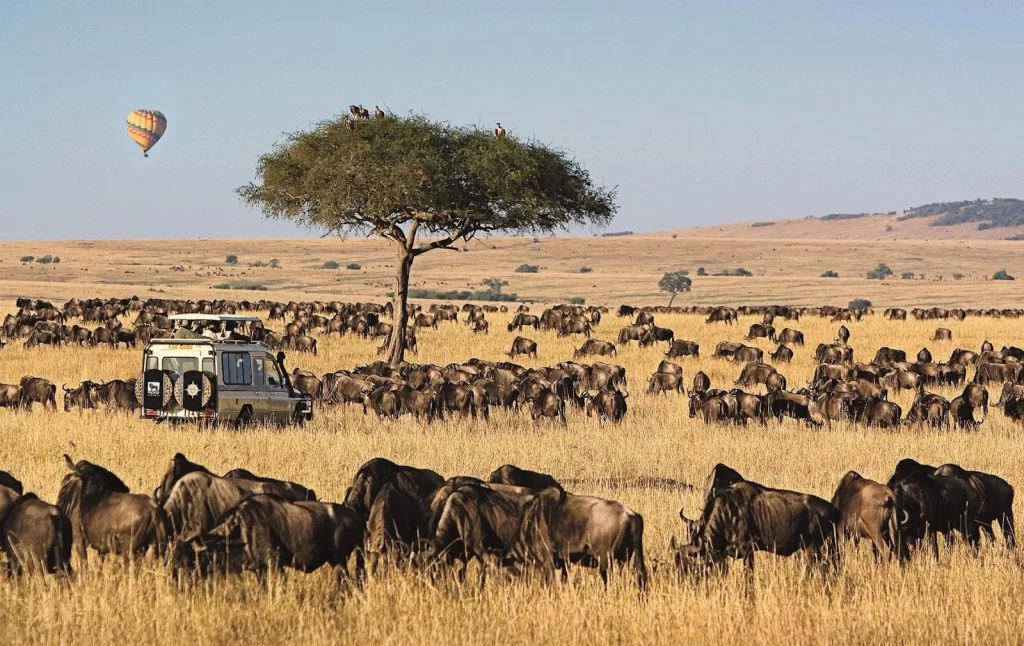
The Mara River
The Mara River meanders through the plains of the Reserve. The river begins high up in the Mau Escarpment, and branches off to several tributaries before draining into Lake Victoria. The Mara River sharply cuts the path of the migration, creating deadly chokepoints for the mammals. The river supports a large population of Nile crocodiles. You can witness hundreds of hunts during the great migration.
Masai Mara Map
Masai Mara is one of the largest game reserves in southwestern Kenya, Africa. The Park is named after the Masai people, who have lived in the area for centuries, and the Mara River, which flows through the reserve. The Mara National Reserve is a part of the Great Rift Valley, covering an area of approximately 1,510 square kilometers. Bordered by the Serengeti National Park in Tanzania to the south, it’s home to a wide variety of wildlife, including lions, leopards, elephants, giraffes, zebras, and many other species.
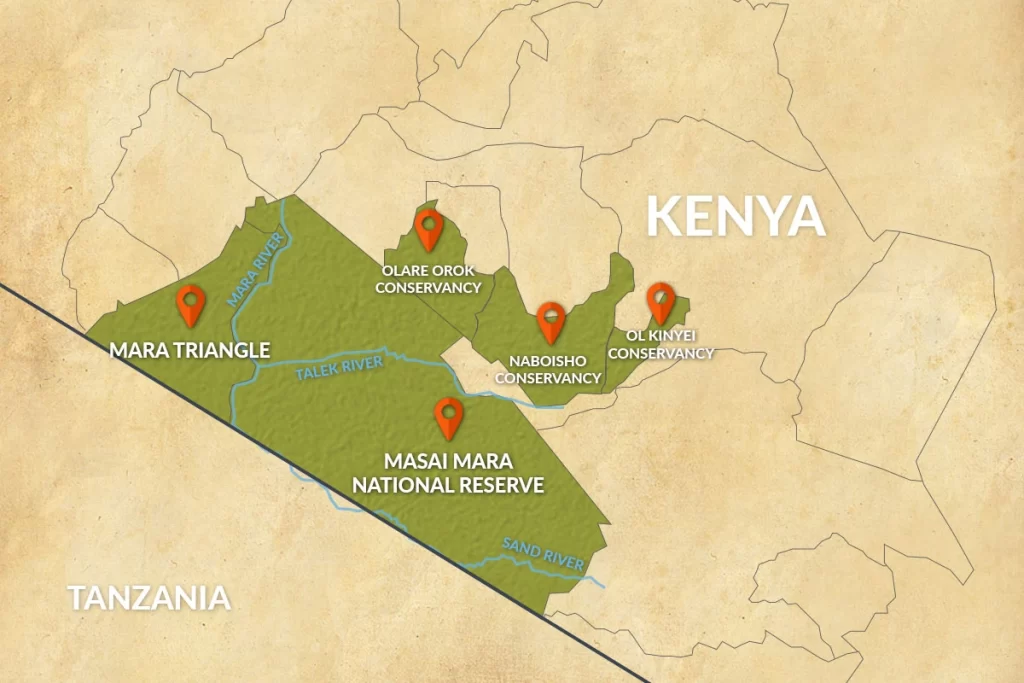
Musiara Swamp
The Musiara Swamp is a seasonal wetland inside the Mara National Park, filled with water during certain times of the year. It is a part of the Reserve and serves as the drainage system of the Mara river. The Musiara is fed by the Mara River. Surrounded by grasslands, acacia woodlands, and marshes, it is situated in the northeastern part of the reserve. You can watch increasing crowds of animals gathering in shallow streams during the great migration as the dry season approaches. The Musiara Swamp is the original home of the Marsh Pride of lions-which featured in Big Cat Diary (BBC, 1996).
Tourists can take a game drive at the Musiara Swamp as part of a guided tour or safari from the different base camps inside the park. It is a popular spot for birdwatching and wildlife viewing, and visitors can often see a variety of animals and birds in the area. Remember to respect the wildlife and follow any rules and regulations set by the Kenya Wildlife Service when visiting the Musiara Swamp. Another popular swamp in the park for wildlife viewing is the Olypunyata Swamp.
Eulai Plains
The Eluai Plain is an area within the Maasai Mara National Reserve that is renowned for its beautiful grassy savannas and rolling hills. It is a popular tourist destination, as it provides a stunning habitat for an abundance of wildlife species such as lions, leopards, zebras, giraffes, impalas, hippopotamus and many others. The area is also home to the Maasai people who have lived in the region for centuries. Visitors to the Eluai Plain will be delighted by the breathtaking scenery and can also learn about local culture from members of Maasai communities through guided tours or campsites inside the park. There are plenty of opportunities to spot animals on game drives around the plain, including during the great wildebeest migration that takes place yearly from July to November. Bird watching is also popular in this region due to the range of birds found here including buffalos, crowned cranes and African jacanas amongst many others. The Eluai Plain offers visitors a unique mix of nature and culture that will be sure to leave them with lasting memories.
National Parks in Kenya
Kenya is home to a vast array of wildlife and stunning landscapes, making it one of the most popular safari destinations in Africa. With 23 National Parks, 4 National Marine Parks, 28 National Reserves, 6 National Marine Reserves and 4 National Sanctuaries spread across the country, visitors can experience a variety of wildlife attractions. From the Maasai Mara’s high concentration of animals to Amboseli’s iconic views of Mount Kilimanjaro or Samburu’s abundant birdlife – each park offers something unique for travelers looking for an unforgettable African safari experience. Whether you choose to go on game drives or take guided tours with local experts, Kenya has something special in store for everyone who visits its vibrant national parks.
- Amboseli National Park
- Samburu National Park
- Mt. Kenya National Park
- Hells Gate National Park
- Lake Nakuru National Park
- Nairobi National Park
- Meru National Park
- Tsavo East and West National Park
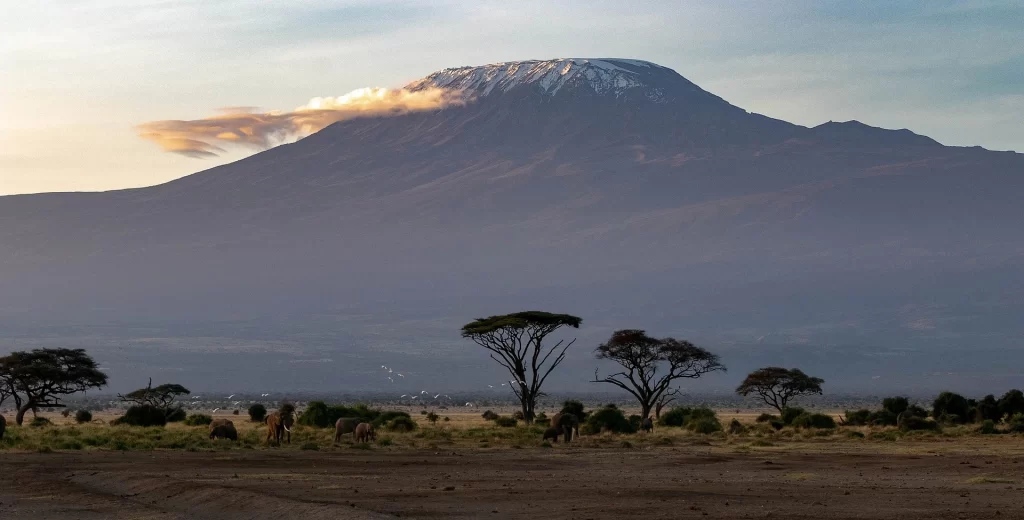
Conservancies in the Masai Mara
The Masai Mara region of Kenya is home to some of the most spectacular wildlife and landscapes in Africa, making it a popular destination for safari enthusiasts. To ensure their protection and preservation, several conservancies have been established in the area. These conservancies are managed by local communities or private organizations in partnership with the Kenyan government, with the primary goal being to protect habitats and species while providing economic benefits to local people through tourism and other forms of land use. Notable examples include Ol Kinyei Conservancy, Mara Naboisho Conservancy, Lemek Conservancy hosts an annual wildebeest migration spectacle every year. With support from tourists, donors and local communities these conservation efforts can be successful in preserving this beautiful part of Africa for generations to come.
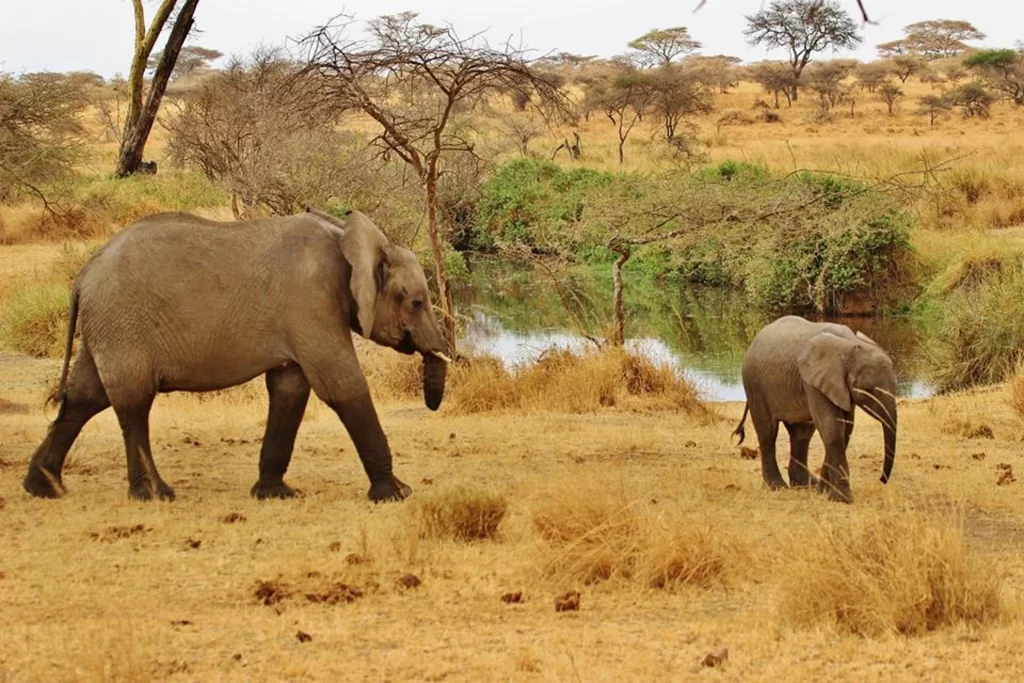
Olare Orok Conservancy
Olare Orok Conservancy is a community-based conservation area located in the Maasai Mara region of Kenya. It is managed by the non-profit organization, Ol Kinyei Conservancy and covers an area of approximately 23,000 acres. The conservancy offers visitors a unique opportunity to experience some of Africa’s most spectacular wildlife up close with its game drive, walking masai mara safari and cultural tours of the reserve. Visitors can also help support conservation efforts by contributing to habitat restoration projects, anti-poaching patrols, and educational outreach programs which are all essential for preserving this beautiful part of Africa for future generations. With its commitment to sustainable tourism and conservation initiatives, Olare Orok Conservancy provides visitors with an exciting yet meaningful way to explore this amazing wilderness destination.
Mara North Conservancy
Mara North Conservancy (MNC) is a private wildlife conservancy located in Kenya, Africa that covers an area of approximately 35,000 hectares (86,000 acres). MNC was created as a joint effort between local Maasai landowners and a group of conservation organizations to promote wildlife conservation and sustainable land use. The conservancy is home to the Big Five (lion, leopard, elephant, buffalo, and rhinoceros) as well as giraffe, zebra, and wildebeest. In addition to protecting the biodiversity of the area, MNC also works with local Maasai community members to improve their economic stability through sustainable development projects.
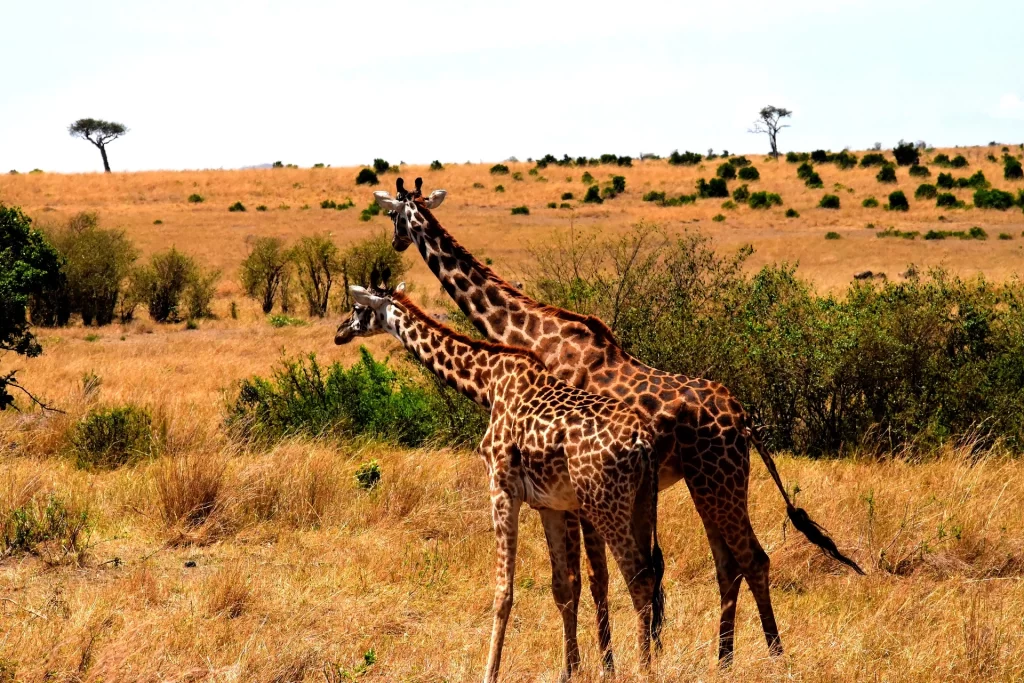
Tourists visiting Mara North Conservancy can partake in a variety of exciting activities such as wildlife masai mara safari drives to observe the Big Five up close in their natural habitat, cultural experiences with local tribespeople that offer insight into traditional Masai culture and customs, or educational tours allowing visitors to learn about MNC’s conservation efforts from knowledgeable experts. With its commitment to both preserving the region’s rich biodiversity and promoting economic prosperity for local communities, Mara North Conservancy offers an exciting yet meaningful way for tourists to explore this remarkable part of Africa.
Ol Kinyei Conservancy
Ol Kinyei Conservancy is a wildlife conservancy located in the Maasai Mara National Reserve in Kenya and owned and managed by the local community. It is dedicated to preserving the natural habitat of this unique region, while also providing economic benefits for its people through eco-tourism. Ol Kinyei Conservancy is home to a vast array of different animal species, including lions, leopards, cheetahs, elephants and giraffes. The area also supports numerous plant species which are essential for maintaining the delicate balance of this incredible ecosystem. In addition to conservation efforts, Ol Kinyei Conservancy provides educational opportunities for locals as well as promotes sustainable tourism practices that benefit both visitors and locals alike. With its commitment to protecting an amazing part of Africa’s biodiversity while providing economic development opportunities for local communities, Ol Kinyei Conservancy offers an unforgettable experience that allows tourists to explore this remarkable wilderness destination.
Mara Naboisho Conservancy
Mara Naboisho Conservancy is a 50,000-acre private wildlife conservancy located in the Mara National Park of Kenya. This remarkable destination provides an unparalleled experience for visitors, with its vast and diverse array of wildlife and breathtaking natural beauty. Not only does it provide an opportunity to view the Big Five (lion, leopard, elephant, buffalo, and rhinoceros) as well as giraffe, zebra, wildebeest and other species in their natural habitat, but also hosts a wide variety of plant species that are essential to sustaining the complex ecological balance of this area.
Mara Naboisho Conservancy strives to promote both conservation efforts as well as economic development through tourism – ensuring all locals benefit from the sustainable practices put in place by the conservancy. Luxury resorts offer tourists comfortable lodging and amenities without compromising on the pristine environment of this wonderful region.
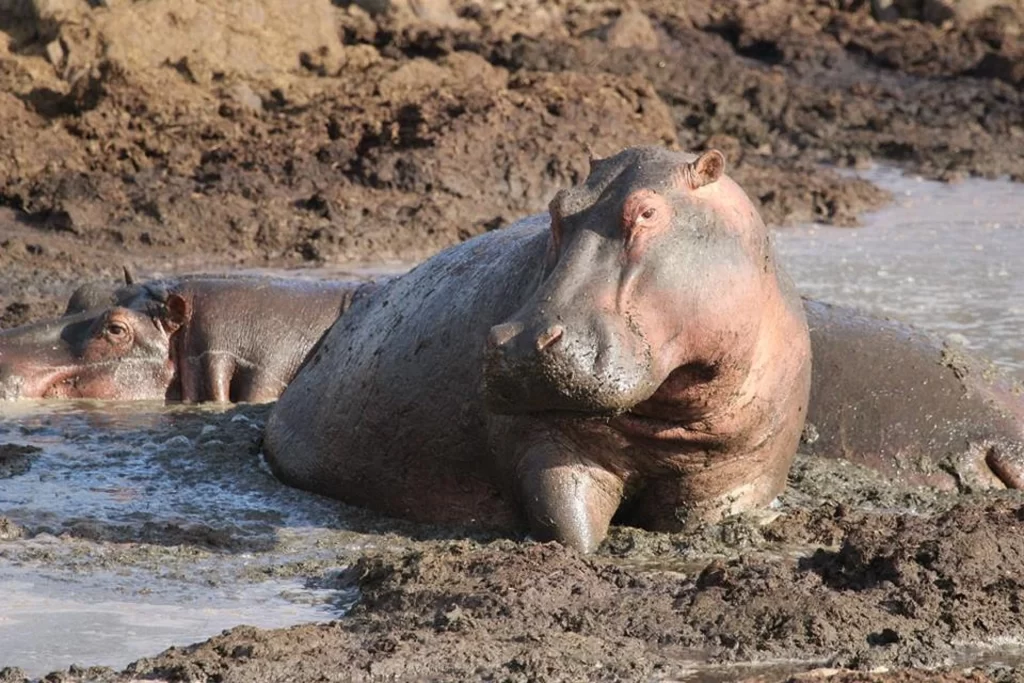
In order to fully appreciate the unique beauty of Mara Naboisho Conservancy, visitors can take part in activities such as guided safaris led by professional tour guides that can point out interesting facts about the region’s wildlife and vegetation. Furthermore, those wishing to explore traditional Masai culture can partake in cultural experiences with local tribespeople that offer insight into their customs and way of life within this extraordinary part of Africa.
Mara Naboisho Conservancy is thus perfect for those looking for an unforgettable African adventure while also wanting to contribute towards conservation efforts in a meaningful way. Its commitment to protecting this stunning wilderness destination while providing economic development opportunities for locals is admirable and truly sets it apart from other wildlife destinations.
Olare Motorogi Conservancy
Olare Motorogi Conservancy is a private conservancy in the Masai Mara National Reserve of Kenya that provides exceptional experiences for tourists looking to observe wildlife. Managed by the non-profit Maasai Mara Wildlife Conservancies Association (MMWCA), this destination allows visitors to experience the natural beauty of the region while contributing towards conservation efforts.
Visitors can stay at one of the luxurious lodges and camps, offering a unique and comfortable way to explore the area. The Olare Motorogi Conservancy also works with local communities, providing education and economic development opportunities, as well as monitoring and research activities to better understand and protect the region’s wildlife.
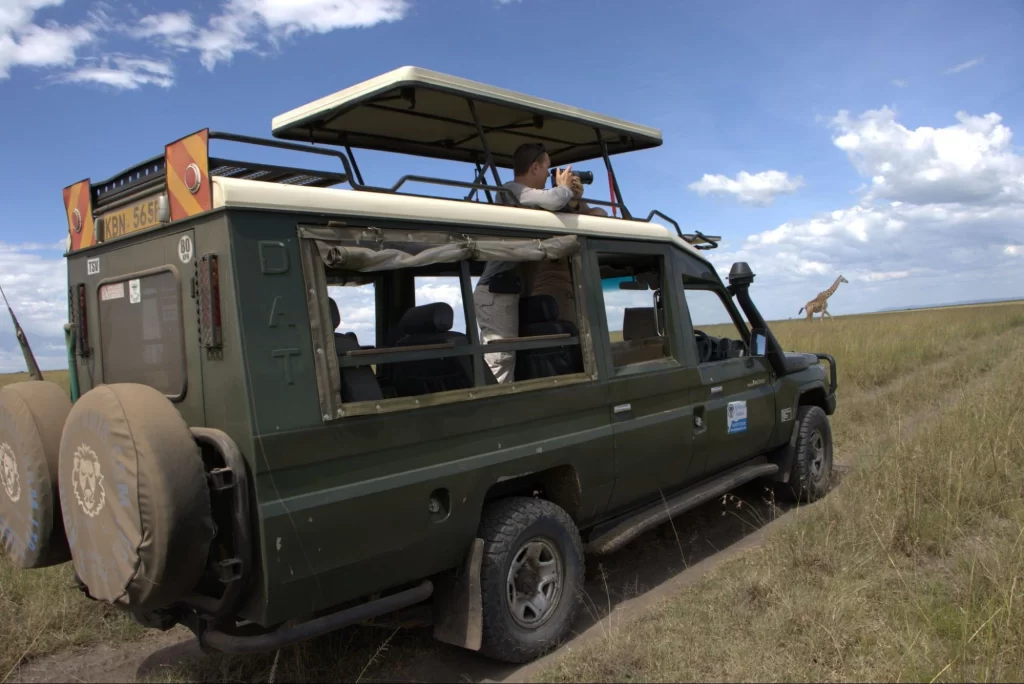
In addition, there are several guided safari tours available where professional tour guides can show tourists interesting facts about the region’s flora and fauna from their natural habitat. Guided cultural experiences with local tribespeople are also offered, allowing travelers to gain insight into traditional Masai culture. By visiting this conservancy, tourists can have a memorable African adventure while helping contribute towards sustainability in a meaningful way.
Olderikesi Conservancy
The Olderikesi Conservancy is a protected area located at the bordering areas of the Serengeti, about 280 kilometers southwest of Nairobi. It covers an area of around 50,000 acres and is known for its diverse wildlife and unique cultural heritage. The conservancy is dedicated to protecting and preserving the local wildlife, their habitats, as well as promoting sustainable tourism and economic development in the region.
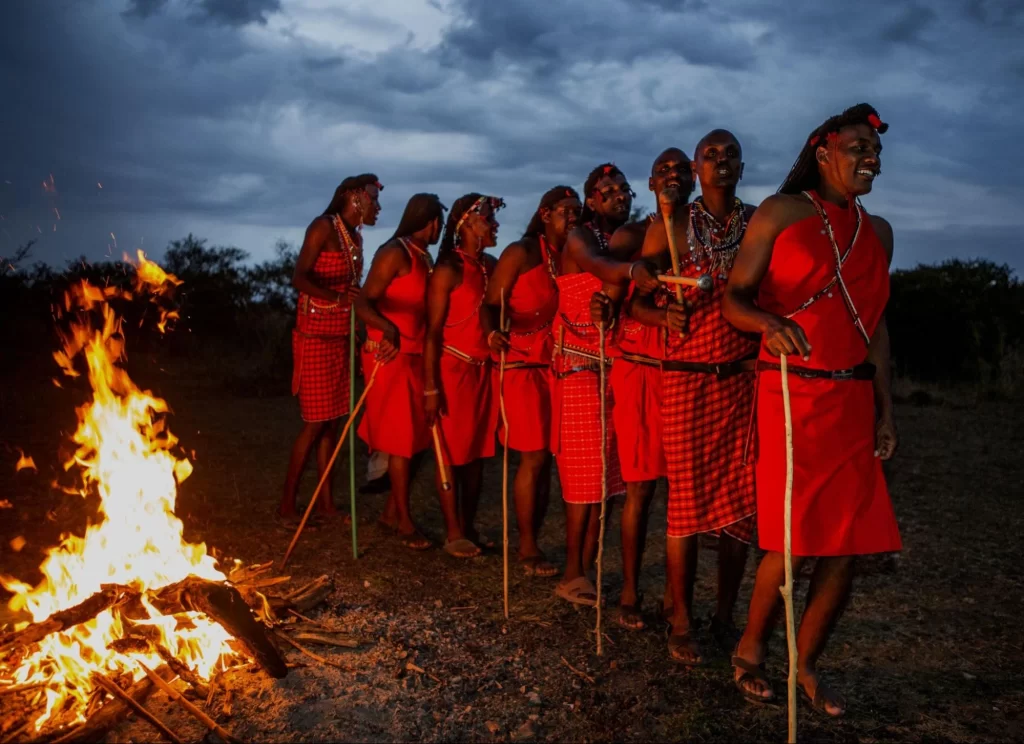
Visitors to the Olderikesi Conservancy are able to take part in a wide variety of activities such as guided safaris, bush walks and bird watching. Tours are often led by experienced guides who can offer insight into traditional Maasai culture and the local flora and fauna. For those wishing to explore further, there are opportunities to visit villages which are home to Masai communities offering a truly authentic African experience. Additionally, visitors have access to luxury lodges where they can stay overnight in comfortable accommodations while taking in the stunning views of the Loita Hills mountain range.

The Olderikesi Conservancy also provides educational opportunities such as lectures and seminars on wildlife conservation issues that help guests gain a deeper understanding of conservation efforts within Kenya’s National Park System. Furthermore it supports research initiatives which seek to better understand and protect these regions’ vulnerable wildlife populations. By visiting this conservancy tourists can have an unforgettable experience whilst contributing towards sustainability in a meaningful way; providing an important boost both economically and ecologically for the Maasai Mara National Reserve.
Loita Hills
The Loita Hills are a stunning mountain range located to the south of the Mara National Park. This area is known for its diverse and beautiful landscape, with a wealth of vegetation from grassy plains to dense forests, as well as unique wildlife including lions, leopards, elephants, giraffes and many others. Visitors to the Loita Hills can explore its unique environment on guided bush walks or safaris, and observe its variety of flora and fauna in their natural habitat. There are also opportunities for cultural visits with the Maasai people living in the region and luxury lodges where visitors can stay overnight and take in the magnificent views of the hills.

Additionally, there are several conservation initiatives actively protecting this region’s wildlife populations and resources through research projects by local organizations. The Loita Hills offer an unforgettable experience for tourists wishing to explore African culture and nature while contributing to sustainable development in the region.
Wildlife of the Masai Mara
The Masai Mara is a vast wildlife reserve in southwestern Kenya, bordering Tanzania and is known for its abundant and diverse wildlife. Tourists visiting the Masai Mara can experience an unforgettable safari trip with opportunities to view large populations of lion, elephant, leopard, cheetah, buffalo and many other species of animals up close in their natural habitat.
The park also contains a wide variety of birds including vultures, eagles, storks and flamingos as well as various mammals such as zebras, giraffes, warthogs and hyenas. Additionally visitors can learn about the traditional Maasai lifestyle from the local people who have lived in this area for centuries.
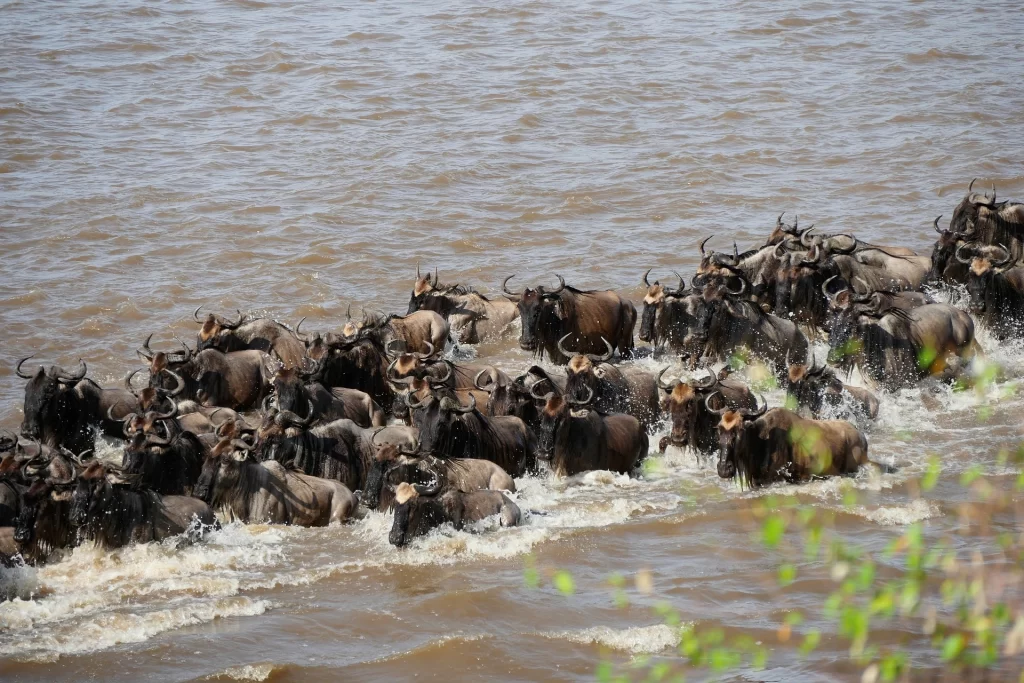
The Masai Mara forms part of the larger Mara-Serengeti ecosystem which spans across both Kenya and Tanzania making it one of Africa’s most important areas for conservation efforts. A visit to this spectacular region will provide tourists with an unparalleled opportunity to explore African culture and nature while contributing to sustainable development in the region.
Birds in the Masai Mara
The Masai Mara is a popular destination for tourists who want to experience an unforgettable safari trip and view the abundant wildlife up close. Among the diverse range of animals, the park also contains a wide variety of birds including vultures, eagles, storks and flamingos. The reserve provides perfect conditions for bird watching with its diverse habitats and rich biodiversity hosting many migratory birds that visit during different times of the year. Some of these species include falcons, ostriches, herons and weavers – providing visitors with an unparalleled opportunity to explore African nature in all its beauty.
The Great Migration
The Great Migration is an awe-inspiring event that brings tourists from around the world to experience the Mara-Serengeti ecosystem in Kenya and Tanzania. Every year, large herds of wildebeest, zebras and gazelles migrate across this vast area in search of fresh grass and water. The animals congregate in Serengeti before beginning their journey northward following the rains, eventually reaching the Masai Mara National Reserve where they remain until dry season sets in.
As they move, they face various challenges such as predators, rivers and human settlements which make for incredible viewing opportunities for visitors to witness firsthand. The Great Migration is a natural wonder that provides tourists with an unparalleled opportunity to explore African nature while contributing to sustainable development efforts in the region.
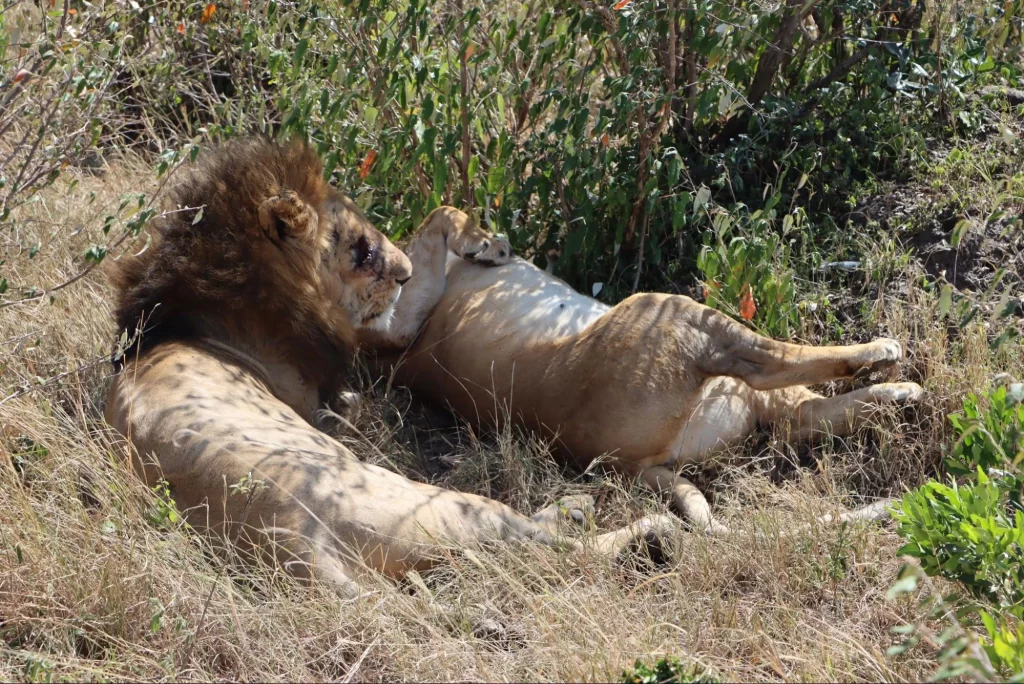
River Crossing in Masai Mara
The Mara National Reserve in Kenya is one of the best places to witness the incredible river crossings, which serve as the dramatic climax of the annual wildebeest migration. Tourists can witness firsthand the strength and courage of these animals as they battle against strong currents and crocodiles to reach their destination. The crossings typically take place between June and August, when large herds of wildebeest, zebras and gazelles gather together to make the crossing en masse.
This is an unforgettable experience, as visitors get a close-up view of the migrating animals while they brave the dangers of the Mara River. Not only are these crossings a source of awe and wonder, but they are also an important part of maintaining the balance in the Mara-Serengeti ecosystem by providing crucial nutrients to the grasslands through animal droppings. As such, tourists should not miss these unique river crossings when visiting this spectacular landscape!
Loita Migration
The Loita Migration is an incredible spectacle for tourists visiting the Masai National Reserve in Kenya. Every year, large herds of wildebeest, zebra and other herbivores move from the Loita Hills to the reserve in search of fresh grass and water. This migration typically begins in June or July and ends in November or December when they begin their return journey back to the hills. During this time, visitors can witness firsthand these animals as they bravely cross rivers while being watched by predators on land and crocodiles lurking beneath the surface of the river.
The River Crossings are also an important part of maintaining balance within this fragile ecosystem, providing crucial nutrients to nearby grasslands through animal droppings. Tourists should not miss out on this amazing opportunity to observe a natural wonder close up!
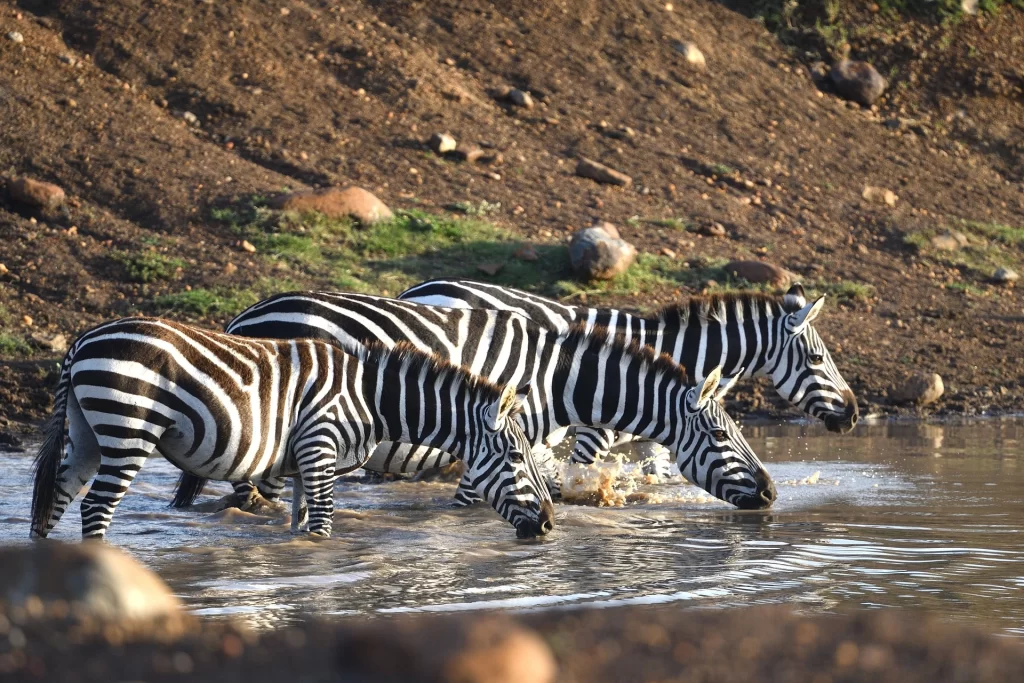
Wildlife Conservation Efforts in Masai Mara National Reserve
Conservation efforts in the Maasai Mara National Reserve are essential to protect and preserve the reserve’s natural resources and biodiversity. The Kenya Wildlife Service (KWS) is responsible for enforcing laws, managing tourism, and promoting sustainable development in the area.
In addition, there are also several private organizations and community-based initiatives that are working to protect the wildlife in the reserve through research, habitat restoration, anti-poaching efforts, education programs for local communities and more. Furthermore, sustainable tourism practices help bring economic opportunities to nearby villages while ensuring that conservation efforts remain top of mind.

These initiatives have helped improve awareness about wildlife conservation among both locals and tourists alike. Other than KWS’ own initiatives, collaborations between private organizations such as African Wildlife Foundation (AWF) are also playing a huge role in conserving lions, elephants, rhinos and other species found in the Maasai Mara National Reserve.
AWF has been providing technical assistance to KWS on ways to reduce human-wildlife conflict while improving protection of endangered species. This has enabled local communities living near the reserve to benefit from a thriving ecosystem that provides food sources, income opportunities and a sense of pride through their involvement in conservation activities.
Masai Mara Culture
The Maasai Mara National Reserve is home to the traditional Masai people, who are known for their vibrant culture and customs. The Maasai have a rich oral tradition and are renowned for their singing and dancing performances. Their clothing consists of brightly colored shukas (blankets) and beaded jewelry which make them easily recognizable when visiting the region.
Tourists often visit the area to experience firsthand the traditional lifestyle of the local tribespeople, with many opting for village visits where they can learn about Masai life from those living it. Another great way to gain insight into this fascinating culture is by having a Masai guide accompany you on your game drive in the park – their vast knowledge of wildlife will certainly add an extra dimension to your safari adventure!

Masai Mara Tribe
The Masai Mara tribe is an indigenous group of people who live in Kenya and Tanzania in East Africa. They are traditionally semi-nomadic, meaning they move their herds of livestock from place to place in search of pasture and water.
This community has a strong and rich cultural heritage that is deeply connected to the land and its resources, and has a long history of living in harmony with nature. The Masai Mara tribal community is well known for their expert herding and knowledge about animal behavior, as well as their traditional lifestyle which includes singing, dancing, beading jewelry and wearing brightly colored shukas (blankets).
The Masai also practice age-old rituals such as circumcision ceremonies for boys entering adulthood, as well as bride wealth ceremonies where cattle are given to the bride’s family by the groom’s family. Tourism has become an important part of the local economy with many seeking to experience the culture firsthand through village visits or hiring a Maasai guide to accompany them on game drives. This gives visitors insight into the fascinating culture while helping to provide economic benefits to local communities.

The Masai are also known for their traditional dances, songs, and storytelling performances that are passed down through generations. Tourists often visit the area to experience firsthand the traditional lifestyle of these tribal peoples and gain insight into this fascinating culture. Visiting a Masai village is an excellent way to learn about everyday life in the region and how it has evolved over time. For those interested in wildlife safaris, having a Maasai guide accompany you on your game drive can add an extra dimension to your experience – their vast knowledge of animals will certainly enhance your adventure!
Masai Tribe Clothing
An important part of the cultural identity of the Masai tribe is the traditional clothing they wear, which usually consists of brightly colored shukas (blankets) and beaded jewelry. Men traditionally adorn themselves with a headdress called a “shuka”, which can be made from red or orange fabric and wrapped around the head and draped over the shoulders as a symbol of status and authority. During rituals, Masai boys often wear intricate beadwork created by family members that represent their tribe and its history.
Maasai Rite of Passage
The Maasai Rite of Passage is an ancient and important set of ceremonies for both boys and girls that mark the transition into adulthood. The most significant ceremony for boys is the Eunoto, which involves a circumcision ritual that marks their transition from boyhood to manhood. During this ceremony, they are initiated into the warrior class and must protect and defend their community. Girls undergo the Engikaret ceremony, marking their transition from girlhood to womanhood with a series of rituals that includes the removal of lower teeth and shaving of their heads.
These ceremonies are celebrated with much pomp within the community, as they signify a major milestone in life for each individual. In addition to these rites, Maasai men also participate in an important jumping dance known as Adamu to celebrate moments of joy or success within the community. This dance is performed by men who jump high up in the air in single file, singing traditional songs in order to invoke blessings from God on behalf of their loved ones.
In many ways, this rite serves as an expression of deep gratitude or appreciation towards their environment and those around them. It is through these cultural practices that Maasai people uphold traditions that have been passed down through generations while connecting with fellow members of the community around them.
Masai Tribe Jumping Dance (Adamu)
The Masai Tribe Jumping Dance, also known as the Adamu, is an iconic ritual of the Masai people of Kenya and Tanzania. It is a celebratory dance that requires a great deal of energy and jumping to be performed properly. It is usually accompanied by singing and chanting, as this serves to honor Adamu, the legendary figure in Maasai folklore who was a great warrior and dancer. The Adamu dance expresses the courage and strength of the Masai people, and its performance marks the climax of many celebrations or ceremonies.

The intricate movements involved in this dance require immense practice and skill – something that can only be achieved through dedication and hard work. The purpose of this dance isn’t just for entertainment but to bring honor to those who are brave enough to perform it at events. Additionally, it serves as a way for members of the community to connect with each other through joyous expression. This traditional cultural practice has been passed down through generations for centuries, keeping alive ancestral heritage while still maintaining relevance in modern times.

